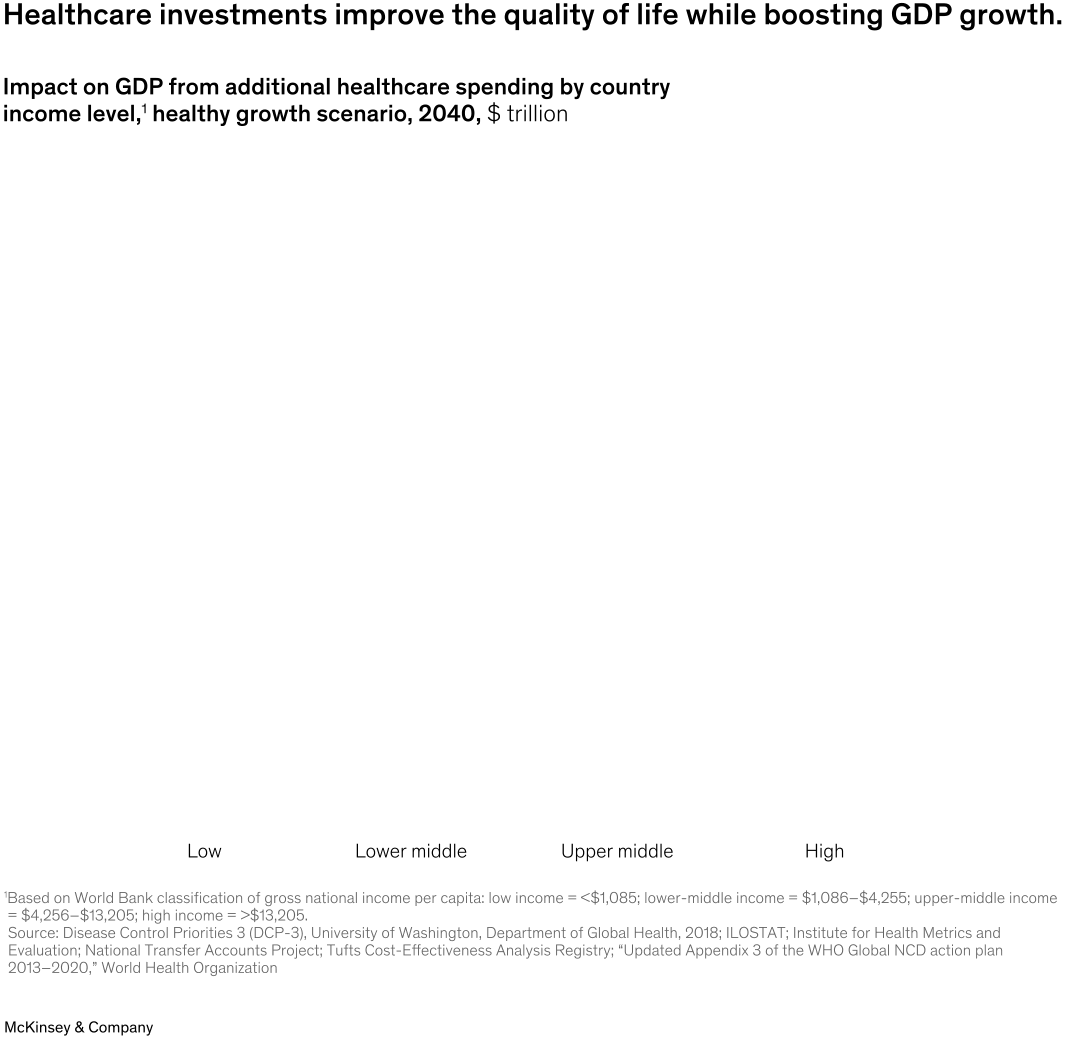Investments in healthcare could add trillions of dollars to global GDP—all while improving quality of life, find McKinsey global managing partner Bob Sternfels, World Economic Forum president Børge Brende, and contributors. Investment areas that could bolster healthcare systems and reduce the global disease burden include improving environmental sustainability, encouraging healthier behaviors, and improving access to vaccines and preventative treatments.

Image description:
A bar graph shows additional healthcare spending’s impact on GDP by estimating 2040 GDP in trillions of dollars as part of a healthy growth scenario. Four bars represent countries by their income level, based on World Bank classification of gross national income per capita. From left to right, the bars represent countries with low (up to $1,085), lower-middle ($1,086 to $4,255), upper-middle ($4,256 to $13,205), and high (more than $13,205) incomes.
Each bar includes a differently colored foreground bar that shows the additional healthcare spending in trillions of dollars, so the background bar shows the spending’s impact on the estimated total GDP.
In low-income countries, the additional healthcare spending doubles the estimated GDP to $200 billion, from $100 billion. In lower-middle-income countries, it quadruples the estimated GDP to $1.4 trillion, from $400 billion. In upper-middle-income countries, it doubles the estimated GDP to $2.8 trillion, from $1.4 trillion. In high-income countries, it triples the estimated GDP to $4.6 trillion, from $1.5 trillion.
Source: Cost-Effectiveness Analysis Registry, Disease Control Priorities 3, ILOSTAT, Institute for Health Metrics and Evaluation, National Transfer Accounts, and WHO.
End of image description.
To read the article, see “Seizing the momentum to build resilience for a future of sustainable inclusive growth,” February 23, 2023.